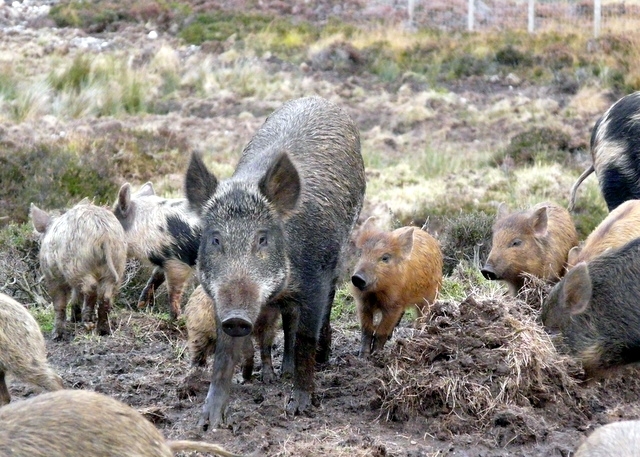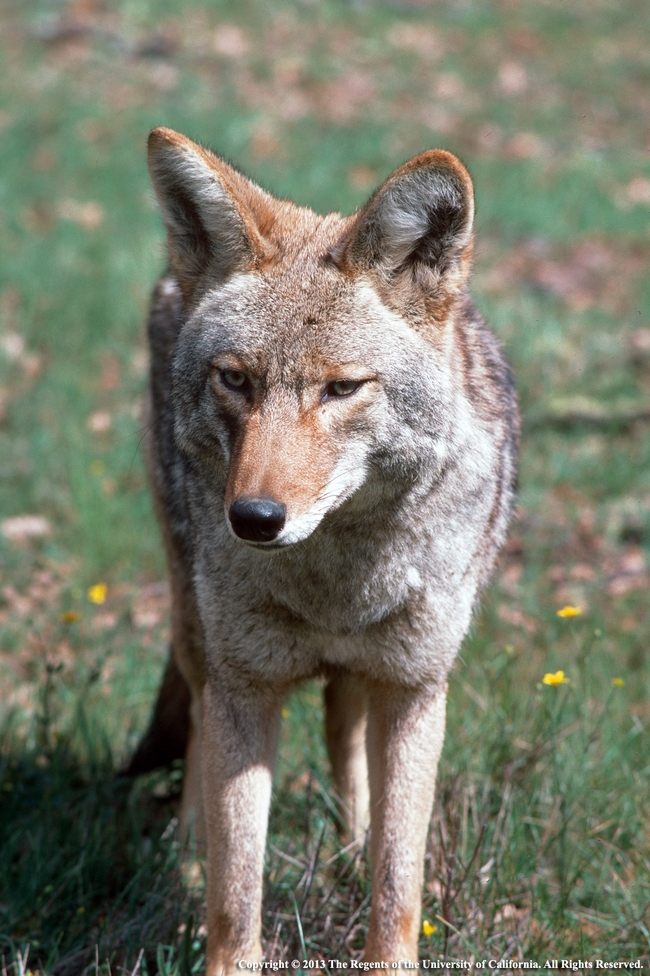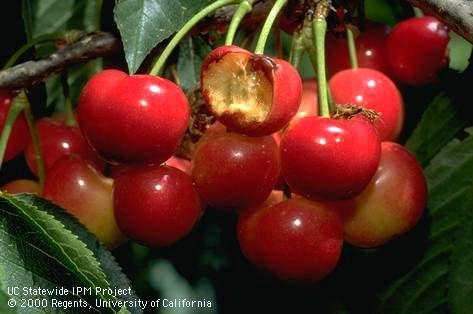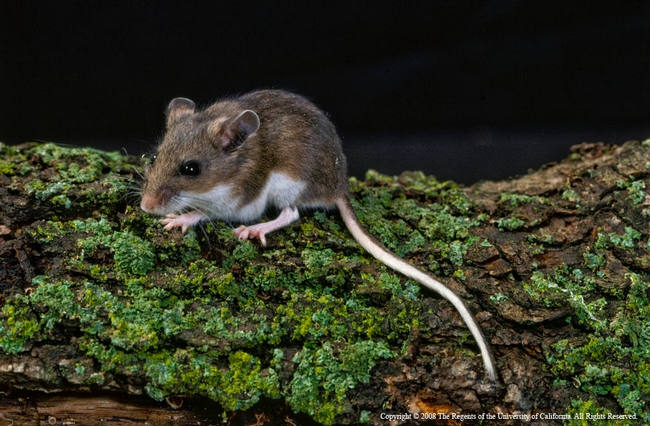Posts Tagged: Roger Baldwin
August 2018 News Clips 8/16-8/31
Enormous wildfires spark scramble to improve fire models
(Nature) Jeff Tollefson, Aug. 31
…“Something is definitely different, and it raises questions about how much we really know,” says Max Moritz, a fire scientist at the University of California, Santa Barbara.
… The problem, Moritz says, is that most of the fire models in use today are based on data from the past two or three decades. But it seems that fire behaviour might be shifting in response to climate faster than anybody expected, and that makes it increasingly problematic to extrapolate from past trends, he adds.
https://www.nature.com/articles/d41586-018-06090-0
Rodent control critical in subsurface alfalfa systems
(Farm Press) Todd Fitchette, Aug 31,
For alfalfa growers seeking other methods of rodent control, Dr. Roger Baldwin, Cooperative Extension specialist at UC Davis, says rodenticides, fumigants and trapping can be moderately to highly effective, depending on method and means used.
https://www.westernfarmpress.com/alfalfa/rodent-control-critical-subsurface-alfalfa-systems
Deeply Talks: Fire & Drought–The Extremes Become Routine
(Water Deeply) Matt Weiser, Aug. 30,
The American West has entered an era of permanent water scarcity, a marked shift from previous periods of episodic drought. The same can now be said for fire: In California, there hasn't been a month without a wildfire since 2012. Join us for a conversation about the ways in which water and wildfire management intersect, and about the West's adaptation to its new, and far from normal, reality. We'll be joined by experts Crystal Kolden, associate professor of forest, range, and fire sciences in the College of Natural Resources at the University of Idaho, and Van Butsic, cooperative extension specialist at the University of California, Berkeley. Email our community editor with questions for the panelists (lindsay@newsdeeply.com) or tweet us @waterdeeply using the hashtag #DeeplyTalks.
https://www.newsdeeply.com/water/talks/153877805
Deadly poultry ailment, Newcastle disease, reaches Ventura County
(Ventura County Star), Aug. 29
Maurice Pitesky, a veterinarian and University of California extension specialist in the School of Veterinary Medicine at UC Davis, said one of the challenges in keeping a lid on the disease is the continued popularity of raising backyard chickens.
“While people have the best intentions, unfortunately a lack of biosecurity practices in people's backyards is one of the contributing factors of the disease spreading,” Pitesky said.
The longtime head of the UFW is stepping down. His replacement will be the first woman to lead the union
(LA Times) Geoffrey Mohan, Aug. 28
At its heart, the UFW remains torn between whether it can be both a grass-roots union and a broad social movement operating in the halls of power, said Philip Martin, a UC Davis agricultural economist and farm labor expert.
...“It is worth noting that the UFW does not have union locals, and so therefore does not have a system under which current farmworkers are trained in leadership development with the idea that they will rise within the union,” he said.
http://www.latimes.com/business/la-fi-ufw-president-20180828-story.html
Expert Views: Managing Wildfires to Protect Water Resources
(Water Deeply) Lindsay Abrams, Aug. 28
Van Butsic, cooperative extension specialist at the University of California, Berkeley:
"Managing forest and wildfires to benefit water resources is difficult because there are trade-offs between short-term costs and long-term benefits. In the short term, wildfires can lead to increased erosion and sedimentation in streams and reservoirs. This contributes to lost revenue for downstream power generators and at times even requires water to be treated before it is potable."
Can Angelenos and Coyotes Coexist?
(LA Magazine) Henry Cherry, Aug. 27
…Intrigued by the animals, I stumbled across Coyote Cacher, an interactive website operated by University of California's Dr. Niamh Quinn. A native of Ireland, Quinn has been studying coyotes for about four years. “There are no coyotes in Ireland, but when I came here there was the need for coyote research in Southern California,” Quinn says. “There is a need for professional extension to the cities and the police departments, the people that never managed coyotes before but all of a sudden find themselves needing to do so.”
http://www.lamag.com/citythinkblog/coyotes-los-angeles/
Why homes are lost to wildfire — is yours as safe as it could be?
(Mercury News) Lisa Krieger, Aug. 27
…“When you start to understand why homes burn, often through embers igniting fuel in home attics or adjacent to homes, then it is easier to understand these patterns,” said Kate Wilkin, a fire specialist for UC Cooperative Extension.
Limiting suburban sprawl can ease the devastation of wildfires
(Mother Nature Network) Matt Hickman, Aug. 27
…But there's a bigger issue at hand. Max Moritz, a wildfire specialist with the University of California's Division of Agriculture & Natural Resources, relays to Martin Kuz of the Christian Science Monitor that inaction from state lawmakers who are reluctant to lead the charge in restricting development in vulnerable areas is only worsening the situation. Presently, local officials, developers and homeowners face few limitations when building in fire-prone wild land urban interfaces. Moritz refers to this as a “political will problem.”
What are GMOs?
(KYMA 13 On Your Side) Caitlin Slater, Aug. 27
Take a look in your refrigerator or pantry and you most likely find something with a NON GMO label on it.
13 On Your Side reporter, Caitlin Slater received an award at the annual Yuma County Farm Bureau meeting. The keynote speaker at the event was genomics and biotechnology researcher at UC Davis, Dr. Allison Van Eenennaam. She presented on how GMOs are actually better for us and our environment.
https://www.kyma.com/news/what-are-gmos-/786983339
Irrigation Tips to Mitigate Almond Hull Rot & Bark Damage
(Pacific Nut Producer) Aug. 27
The posting of this video is a little belated as almond harvest has already begun, but if you've had hull rot issues this season, be sure to watch this brief video interview with Nut Crops Advisor Mae Culumber as she provides some tips to prevent hull rot and trunk damage through better irrigation practices, as explained at a mid-July Nut & Vine Irrigation seminar at the UC Cooperative Extension office in Fresno. Read more about it in Pacific Nut Producer Magazine. Culumber will also be addressing almond growers at the Annual Grape, Nut & Tree Fruit Expo coming up on November 13th at the Big Fresno Fairgrounds, so be sure to attend!
http://www.pacificnutproducer.com/2018/08/irrigation-tips-to-mitigate-almond-hull-rot-bark-damage
Three Tips on Managing Pocket Gophers
(American Vineyard) Aug. 24
Pocket gophers can be very detrimental for growers, especially those with young orchards. So how do you minimize populations of these pesky critters? Watch this brief interview with Julie Finzel from the UC Cooperative Extension as she offers growers three quick tips for effective management. Julie will also be addressing growers on wildlife issues at the upcoming Grape, Nut & Tree Fruit Expo at the BIG Fresno Fairgrounds on November 13th, so be sure to attend. Learn more about it on AgExpo.biz.
http://www.americanvineyardmagazine.com/2018/08/24/three-tips-on-managing-pocket-gophers/
Master Gardeners: gardening in an age of climate change
(Napa Valley Register) Aug 24
This article is a summary of a seminar conducted by Susanne von Rosenberg, UC Master Gardener of Napa County, on gardening in an age of climate change.
Idea to Reduce Glyphosate Use with Grapes
(Cal Ag Today) Mikenzi Meyers, Aug. 23
John Roncoroni, a UC Cooperative Extension Weed Science Farm Advisor in Napa County, has made strides toward meeting this challenge. “Many times, growers will do two applications of herbicides during the year … but what I'm trying to do is push it back to post-leaf fall after the season to clean up and come back with a pre-emergent material right before bud break then maybe skip that last glyphosate treatment after bud break.”
https://californiaagtoday.com/idea-reduce-glyphosate-use-grapes/
California Today: The Human Element in California's Wildfires
(New York Times) Tim Arango, Inyoung Kang, Aug. 23
William Stewart, an expert on forestry at the University of California at Berkeley, said that part of the California dream was keeping “nature as it is,” with minimal management of forests.
https://www.nytimes.com/2018/08/23/us/california-today-fires-humans.html
Editing the Future of Aquaculture
(Hatchery International) Eric Ignatz, Aug. 23
…Dr. Alison Van Eenennaam, a cooperative extension specialist at the University of California, Davis, and a collaborator on the Recombinetics project, says that gene editing in the case of polled cattle is used to address an animal welfare concern. Typically, horns must be burned off to better protect the safety of farmers and other animals.
http://magazine.hatcheryinternational.com/publication/?i=517633&article_id=3159268#
Industrial hemp could be an alternative crop of the low desert
(Imperial Valley Press) Oli Bachie, Aug. 23
Hemp, Cannabis sativa L., is a dioecious annual plant that has not been grown legally in California for many years, due to regulatory restrictions.
UCSB SmartFarm uses cloud computing to help farmers increase sustainability
(Santa Maria Sun) Kasey Bubnash, Aug. 22
"They're basically taking what Google and the internet are doing with information and applying it to ag," said Beth Grafton-Cardwell, a research entomologist at UC Riverside. "And that hasn't really been done."
The Social Costs of Living in Wildfire-Prone Areas
(East Bay Express) Alastair Bland, Aug. 21
…"But that's so politically contentious — it's a line politicians walk up to but turn away from," said William Stewart, a UC Berkeley forestry and wildfire specialist.
… “People seem to have short memories," said Sabrina Drill, a natural resources advisor for the UC Cooperative Extension, a statewide off-campus division of the university system that focuses on agriculture and natural resources. "I think people might think twice about building a home where there had just been a fire, but people seem to forget after about three years."
… Van Butsic, a UC Berkeley researcher who studies forestry and land use, has closely studied this. In a paper now under review for publication, he and scientist Anu Kramer, from the University of Wisconsin, describe an alarming trend of building homes in known fire-risk areas.
"We studied 30 of the largest fires since 1970," he said. On average, they found that 20 years after an inhabited area burns, not only were most of the destroyed homes rebuilt but many new homes were added — about twice as many homes in total as there were at the time of the burn.
… In 2016, researcher Susan Kocher spent nine months on sabbatical in Provence, the arid region of southern France that resembles much of inland California. Here, Kocher — the Central Sierra Natural Resources Advisor for the UC Cooperative Extension — compared building patterns in high-fire risk parts of California and France.
"In California we often say, 'We should be able to tell people they can't build here,'" said Kocher, whose research, coauthored with Butsic, was published in March of 2017 in the journal Land. "In France, they just tell people they can't build somewhere."
Cooperative Extension adapts to a less agricultural America
(Washington Post) Dean Fosdick, Aug. 21
In its century of existence, the Cooperative Extension System has been a valuable resource distributing university-driven, science-based information — mostly about farming and gardening — to the public. But in today's less agricultural America, the Extension network is adapting, expanding its rural focus into cities and suburbs too.
Karuk Tribe And University Expand Food Partnership
(Jefferson Public Radio) Geoffrey Riley, April Ehrlich & John Baxter, Aug. 20
The Karuk Tribe and the University of California-Berkeley developed a partnership several years ago to rebuild Traditional Ecological Knowledge.
Lisa Hillman from the tribe's Píkyav Field Institute and Jennifer Sowerwine from UC-Berkeley are our guests.
http://www.ijpr.org/post/karuk-tribe-and-university-expand-food-partnership#stream/0
Finding the Sweet Spot for Carb Consumption
(KQED) Forum, Aug. 20
A Summary of the Study (The Lancet)
Guests:
- Lorrene Ritchie, director, Nutrition Policy Institute, University of California
- Rick Hecht, professor of medicine, University of California San Francisco
https://www.kqed.org/forum/2010101866786/finding-the-sweet-spot-for-carb-consumption
Officials give updates, answer questions at Mendocino Complex virtual recovery meeting
(Lake County News) Aug. 17
After weeks of fire update meetings, on Thursday night local, state and federal officials participated in a meeting focused on recovery from the Mendocino Complex.
Speakers included County Administrative Officer Carol Huchingson, Cal Fire Incident Management Team 2 spokesman Jeremy Rahn, Paul Gibbs of federal Incident Management Team 1, Lake County Sheriff Brian Martin, Supervisor Jim Steele, Public Health Director Denise Pomeroy, James Scott of Lake County Environmental Health, Lake County Water Resources Director David Cowan, Rachel Elkins of the University of California Cooperative Extension, Lakeport Mayor Mireya Turner and Lake County Recovery Coordinator Nathan Spangler.
The USDA Is Buying Milk And Giving It To Food Banks
(NPR Marketplace) Mitchell Hartman, Aug. 17
...Agricultural economist Daniel Sumner at the University of California, Davis said the purchase is only a drop in the bucket.
"How much can you move the needle on price buying one-tenth-of-one percent of milk?" Sumner said. "Not very much."
https://www.marketplace.org/2018/08/17/economy/milk-usda-50-million-food-bank
Israel and UC deepen water technology collaboration
(Jewish News of Northern California) Hannah Jannol, Aug 17
S.F.-based Consul General of Israel Shlomi Kofman attended the MOU signing ceremony on July 16, held during a three-day workshop titled, “The Future of Water for Irrigation in California and Israel.” The document was signed by an agricultural division of the University of California, UC Davis and the Agricultural Research Organization of Israel.
… Doug Parker, director of the California Institute for Water Resources, helped put the MOU together. He said California and Israel already work together frequently on water research, but formalizing the relationship could give the two parties more leverage when applying for grants and funding.
https://www.jweekly.com/2018/08/17/israel-and-uc-deepen-water-technology-collaboration/
‘Batnadoes' Can Protect California's Crops
(Atlas Obscura) Anne Ewbank, Aug. 16
… He's likely right, according to Rachael Long, a farm advisor with the UC Cooperative Extension in the Sacramento Valley. She's researched for decades how bats can help farmers control pests. “Armyworms are always a big problem in rice production,” she says. “Bats are predators, of armyworms, cutworms, and other pests.” Bats' nocturnal feasts prevent adult moths from laying eggs that will hatch into hungry, rice-eating caterpillars, and, Long says, their impact cannot be overstated. When pest populations get out of control, “it can be really devastating.”
https://www.atlasobscura.com/articles/bats-and-farming
Wildfires Are Inevitable – Increasing Home Losses, Fatalities and Costs Are Not
(KQED) The Conversation, Max Moritz, Naomi Tague and Sarah Anderson, Aug. 16
Wildfire has been an integral part of California ecosystems for centuries. Now, however, nearly a third of homes in the state are in wildland urban interface areas where houses intermingling with wildlands and fire is a natural phenomenon. Just as Californians must live with earthquake risk, they must live with wildfires.
UC Cooperative Extension to track wild pig damage
UC Cooperative Extension is asking California farmers and landowners to help track the the state's wild pig population, reported Julia Mitric on Capitol Public Radio News. Signs of the pig's presence are hard to miss, UCCE advisor John Harper told the reporter.
"It looks like you came in with a rototiller and just uprooted everything," he says. "It's like ground squirrel mounds or gopher mounds on steroids because the pigs can go over such a large area."
California's wild pigs have a variety of origins. Harper says many are descended from domestic pigs who were released into the wild by humans or escaped on their own and bred with game hogs such as the Russian boar hog. Wild pigs root around in the soil for truffles and small plant roots with their sharp tusks tear, destroying plants and grasses that sheep and cattle like to graze on. They also open up the land for erosion and invasive species.
"So you might get something like 'medusahead,' an invasive grass that tends to crowd out other more desirable forage species," Harper said.
A team of UC Cooperative Extension scientists have created a GIS-based mobile app that works on Android and Apple devices to make it easy for landowners to participate in the study.
“Rangeland managers and farmers can enter data into the app from the field so that we can estimate the land area and economic impacts of feral pig damage over a longer time period,” said Roger Baldwin, UC Cooperative Extension wildlife specialist in the Department of Wildlife, Fish, and Conservation Biology at UC Davis.
Learn more and sign up to participate in the study on the UC Agriculture and Natural Resources news website.
Experts converge in March to discuss human-wildlife conflict resolution
The Vertebrate Pest Conference is held every two years, usually in California, in cooperation with the Pesticide Applicators Professional Association (PAPA). The leading authorities with vertebrate management expertise from around the world congregate to present the latest research and extension information.
The conference is intended for animal control officials, wildlife managers, agricultural producers, pest control advisers, consultants, educators, researchers and natural resource managers. California Department of Pesticide Regulation and California Department of Public Health continuing education units are available for participants. Special symposia at the conference include bird, wild pig, and urban coyote management.
At the Vertebrate Pest Conference, experts will share the latest information about coyote attacks, human-coyote conflicts, and present several talks on coyote management, including hazing.
Niamh Quinn, a UC Cooperative Extension vertebrate pest advisor based at the UC South Coast Research and Extension Center in Orange County, is one speaker on the growing problem of urban coyotes. With over 3 million people in Orange County, 8 state parks and beaches, countless city parks and 19 county parks and wilderness areas, conflicts with urban coyotes are bound to happen. Managing coyotes includes managing people's behavior too.
“We can't manage what we can't measure. This conference provides a unique opportunity to discuss ongoing conflicts, especially those related to urban coyote management," Quinn said. "Research is needed to understand urban coyote behavior and if these behaviors are changing as a result of the way we are currently living. Outreach is needed to instruct urbanites on appropriate behavior where coyote conflicts are occurring, and managing coyotes is everyone's concern. We need better and improved strategies for measuring and managing these conflicts.”
Vertebrates are also problematic in commercial agriculture. A 2011 survey of wildlife damage by UC Cooperative Extension specialist on human-wildlife conflict resolution, Roger Baldwin, said agricultural losses from wildlife damage in California is likely in excess of $1 billion annually. Based on the survey results, economic losses were greatest for voles and pocket gophers in alfalfa; and wild pigs, birds, and ground squirrels in nut crops.
One talk at the Vertebrate Pest Conference will be a North American overview of bird damage in fruit crops. Other presentations cover field rodent repellents, food safety, and trapping.
UC IPM has information on vertebrate pest management for urban and communities, as well as commercial agriculture.
Bad bear behavior can't be pinned on California drought
The drought is a wake-up call to water users all over California, except perhaps its bears. The San Francisco Chronicle suggested in a front page article recently that the winter is too warm for bears to sleep. However, wildlife experts quoted by Mother Jones said the weather isn't to blame.
What motivates some bears to stay awake while others hibernate is still a mystery to scientists, according to Roger Baldwin, UC Cooperative Extension specialist in the Department of Wildlife, Fish and Conservation Biology at UC Davis. He has conducted extensive research on bear behavior.
When small mammals hibernate, their heart rate and body temperature drop and stay low for several months, the article said. Black bears, on the other hand, are much less extreme: They crank down their metabolism, heart rate, and body temperature just enough to get seriously lazy, but are still with it enough to be "perfectly capable of taking a swipe at you if you crawl into the den with them," Baldwin said. Waking them up is not uncommon or difficult.
Generally, temperature has a smaller influence on hibernation behavior than the availability of food. But bears are such proficient omnivores, said California Department of Fish and Wildlife biologist Jason Holley, that even a drought probably isn't enough to disrupt their hibernation habits, unless it continues for several more years.
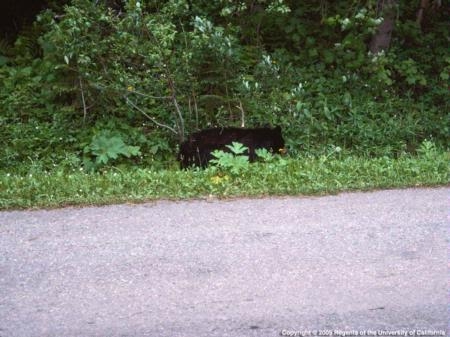
Bears are adaptive and mobile. They can find food and water even in a drought, say wildlife experts.
Recent cases of hantavirus a reminder to be mindful of deer mice
Two people in California were recently diagnosed with hantavirus infection, and one has died. Both of them spent time at Curry Village in Yosemite National Park, according to the California Department of Public Health. These new cases of hantavirus are a reminder to be aware of the threat and to take precautions to prevent infection.
Hantavirus is a very rare but very serious disease. About one-third of cases identified in California are fatal, CDPH reports. Since hantavirus was first identified in 1993, there have been 60 cases in California and 587 cases nationally. The two recent cases bring the total California case count for 2012 to four.
Hantaviruses are a group of viruses spread mainly by deer mice. The UC Integrated Pest Management Program recently published a comprehensive online Pest Note about deer mice, which details identification, biology and behavior, damage and management. The publication says deer mice are the most abundant and widely distributed mammal in North America. Proficient jumpers and runners, deer mice were so named for their agility.
Because deer mice prefer forests, grasslands and agricultural crops, they aren’t normally found in urban and residential areas unless fields, forests or other suitable habitats are close by. Deer mice shed the hantavirus in their saliva, urine and droppings. A person may be exposed to hantavirus by breathing contaminated dust after disturbing or cleaning rodent droppings or nests or by living or working in rodent-infested settings. There is no evidence that North American hantaviruses can spread from one person to another.
The most effective way to avoid contracting hantavirus from deer mice is to keep them out of houses, cabins, and dwellings by rodent-proofing and excluding them from these structures by sealing all small gaps and cracks. Once deer mice infest a dwelling, it is critical to avoid working and sleeping in these areas until the infestation has been controlled and the area has been made safe for humans.
Before occupying an infested building, open the doors and windows to air out the room for at least 30 minutes. Where possible, use an electric fan on windowsills and in door entrances to assist the process. Be sure to vacate the building during the ventilation process to prevent inhaling aerosolized particles. Wearing a commercially available cloth or paper breathing mask offers some protection and is better than no protection at all. However, only an approved respirator equipped with high-efficiency particulate air (HEPA) filters offers total respiratory protection against airborne viruses.
It is important to wear nonfabric gloves (e.g., rubber, latex, vinyl, or nitrile) when cleaning deer mouse-infested buildings. Because humans can contract the virus by inhaling aerosolized deer mouse urine and feces, never stir up dust by vacuuming or sweeping or through any other activity.
To disinfect potentially contaminated areas, thoroughly wet trapped deer mice, droppings, and nests with an appropriate disinfectant solution such as Lysol or a 10% hypochlorite (bleach) solution. To make this bleach solution, mix 1 1/2 cups of household bleach in 1 gallon of water (or one part bleach to nine parts water). Note that a bleach solution may damage rugs and fabrics and irritate skin. Wear nonfabric gloves whenever touching or cleaning contaminated surfaces or when handling mouse nests, dead mice, or mouse traps.
Once everything has soaked for 10 minutes, remove all nest material, mice and droppings with a damp towel and then mop or sponge the area with the disinfectant solution. Upholstered furniture and carpets can be shampooed and steam cleaned. If you wish to reuse the gloves used while cleaning contaminated areas, you must properly disinfect them before removal. After removing the gloves, it is important to thoroughly wash hands with soap and water or use a waterless alcohol-based hand sanitizer when soap is unavailable and hands aren’t visibly soiled.
The UC IPM Pest Note on deer mice was written by Niamh Quinn, Evolution, Ecology, and Behavior, University of Liverpool, Liverpool, U.K., niamh.quinn@liverpool.ac.uk; Roger Baldwin, UC Cooperative Extension advisor, Statewide IPM Program, Kearney Agricultural Research and Extension Center, Parlier; and Bob Timm, director, UC Hopland Research and Extension Center,. For additional up-to-date information on rodent cleanup, visit the Centers for Disease Control and Prevention Web site, http://www.cdc.gov/rodents/cleaning/index.html.


